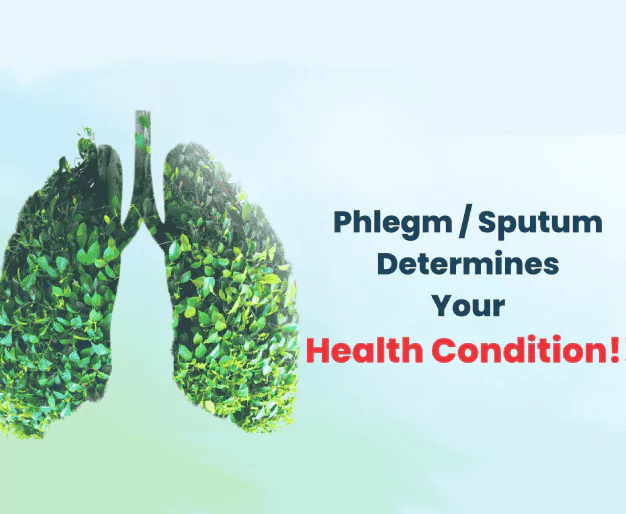BLOGS
Understanding Phlegm: What Different Types Indicate About Your Health

Phlegm | Types and Health Implications
Phlegm, also known as sputum, is a thick, sticky substance produced by the mucous membranes of the respiratory tract. It can be expelled through coughing, and its color and consistency can provide valuable insights into underlying health conditions. Here are some common types of phlegm and their potential causes.
Clear or White Phlegm
Normal Mucus: Clear or white mucus is often normal and produced by the respiratory system to trap and eliminate particles, irritants, and microbes.
Yellow or Green Phlegm
Infection: An increased presence of white blood cells in the mucus can cause it to appear yellow or green. This can be a sign of a bacterial infection, such as bronchitis or pneumonia.
Black or Brown-Colored Phlegm
Smoking: Smoking can lead to the production of brown or rust-colored phlegm due to the accumulation of tar and other substances in the lungs.
Environmental Exposures: Exposure to polluted air or certain occupational hazards can also contribute to discoloration.
Red Phlegm
Blood: Coughing up red-tinged phlegm may indicate the presence of blood. Causes can range from minor irritation to more serious conditions like tuberculosis, bronchitis, or lung cancer.
Excessive Phlegm Production
Allergies: Allergic reactions can lead to an increase in mucus production.
Asthma: People with asthma may experience excess mucus production and difficulty clearing it from the airways.
Thick and Sticky Phlegm
Dehydration: Inadequate hydration can lead to thicker and stickier mucus.
Certain Medications: Some medications may contribute to changes in mucus consistency.
Phlegm itself is a natural and necessary component of the respiratory system, helping to trap and eliminate foreign particles, irritants, and microbes. In many cases, the presence of phlegm is a normal response to respiratory infections, allergies, or environmental factors.
Health Complications Associated with Phlegm
Persistent or excessive phlegm production can be a symptom of an underlying health issue, and certain conditions associated with phlegm may lead to complications, such as:
- Respiratory Infections: Conditions like bronchitis or pneumonia can cause increased phlegm. If untreated, these infections can lead to respiratory failure or spread to other body parts.
- Chronic Obstructive Pulmonary Disease (COPD): Includes conditions like chronic bronchitis and emphysema, causing chronic inflammation and mucus production, leading to difficulty breathing and reduced lung function.
- Asthma: Excessive mucus production can contribute to airway obstruction, leading to asthma attacks and decreased quality of life.
- Chronic Sinusitis: Associated with persistent drainage of mucus down the throat, causing throat irritation and coughing.
- Inhalation of Foreign Substances: Prolonged exposure to certain substances or irritants can lead to chronic respiratory issues and persistent phlegm.
- Aspiration Pneumonia: If phlegm is not effectively cleared, it may contribute to aspiration pneumonia, where foreign material is accidentally breathed into the lungs.
It’s important to note that phlegm itself is not a disease but rather a symptom of an underlying issue. If you experience persistent or concerning symptoms related to phlegm, such as changes in color, difficulty breathing, chest pain, or persistent coughing, it’s crucial to seek medical attention as per the best pulmonologist in Kukatpally.
Conclusion: Monitoring and Managing Phlegm
The presence of phlegm doesn’t always indicate a serious problem. However, if you experience persistent or concerning symptoms, such as changes in phlegm color, difficulty breathing, chest pain, or persistent coughing, it’s essential to consult a healthcare professional for a thorough evaluation and appropriate diagnosis. For the best pulmonologist in Kachiguda, visit Prathima Hospitals.
